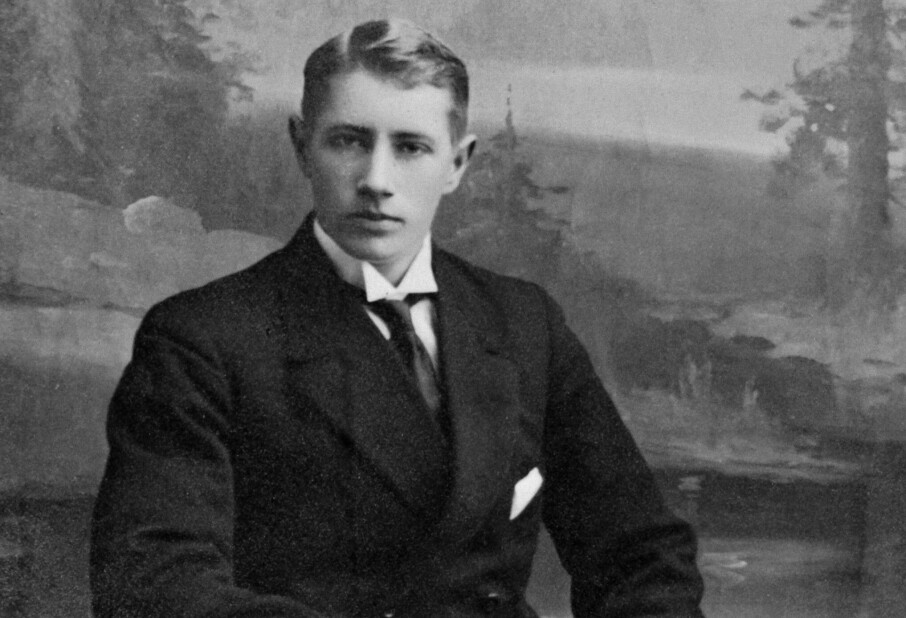
Why do metal detector enthusiasts find so many cheap coins, and so few valuable ones?
If the finds by metal detector hobbyists are truly representative, then Norwegian history may need to be re-written.
In an opinion piece on the Norwegian science news website forskning.no, two of Norway's foremost researchers on ancient coins at the University of Oslo ask an uncomfortable question:
Are people who go out searching for coins with metal detectors only handing in the cheap coins they find — and keeping the valuable medieval coins themselves?
If that is true, these hobbyists are violating section 12 of the Cultural Heritage Act.
The law states that all coins that are found and are older than 1650 must be handed in to the police or directly to local archaeological authorities. As a thank-you for the effort, the person who hands in the coins is entitled to a finder fee from the government, if the coin exceeds a certain value.
Very popular hobby
In just a few years, searching for metal has become very popular.
The equipment used by metal detector hobbyists has also become much better. There are probably several thousand hobbyists in Norway who search for metal using detectors.
Metal detector hobbyists are also finding more coins from the Middle Ages than ever before.
But the coins they find are often quite different from what researchers themselves have found. In particular, hobbyists typically find much less valuable English coins.
This new trend in recent coin finds means that researchers may now have to change their perception of royal power and coinage in what historians see as Norway's heyday — 800 to 1000 years ago.
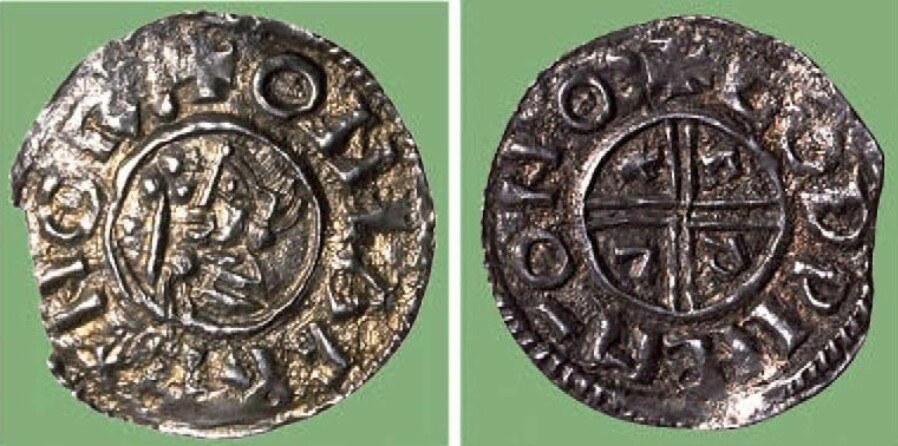
Magnus VI and Håkon V
But Svein Gullbekk says that something isn’t quite right here.
Gullbekk is a professor in the Section for Numismatics and Classical Archaeology at the University of Oslo’s Museum of Cultural History. He says that more than 24,000 medieval coins have been found in a number of different places in Norway.
These finds have given researchers access to large quantities of empirical information, allowing them to conduct exciting research on Norwegian history from around the year 1000 to the 1300s.
This was a time when the country was ruled by famous kings such as Magnus VI (Magnus Lagabøte, 1263–1280), Eirik II Magnusson (1280–1299), Duke Håkon (1284–1299) and Håkon V Magnusson (1299–1319).
All of these rulers were interested in coins and the country’s new Norwegian coinage.
“The detector finds from large parts of Norway paint a whole new picture,” Gullbekk says. “It may mean we have to change our understanding of the distribution between Norwegian coins and foreign coins during the Norwegian high Middle Ages.”

Why such great differences?
Gullbekk gives us some examples of how what hobbyists have found is different from what archaeologists have found:
When archaeologists examine coin hoards, or coins found under the floors of Norwegian medieval churches, they almost always find that 90 per cent of the coins are Norwegian.
When hobbyists find medieval coins in counties such as Østfold, Vestfold, Agder and Oslo, 80-90 per cent of what they report to authorities are foreign coins, mostly English coins of little value.
A medieval English penny is typically worth around NOK 500, or about EUR 50.
A Norwegian coin from the Middle Ages can bring prices from NOK 10,000 and up to NOK 50,000, or EUR 1000 to 5000, says Gullbekk.
Gullbekk says this makes him feel like he has to ask a cheeky question.
“Is it possible that if a hobbyist finds an English coin, he hands it in, but if he finds a more valuable Norwegian coin from the Middle Ages, he keeps it for himself?” he asks.
A very special pattern
Here’s an even stranger observation.
When Gullbekk and his research colleagues compared findings from different parts of Norway, they discovered a very surprising pattern.
It turns out that in counties like Troms, Nordland and Oppland, metal detector hobbyists often report Norwegian medieval coins. The proportion is almost as great as what archaeologists themselves find when they search with metal detectors or use other techniques to dig up medieval treasures.
“Metal detector hobbyists in Troms alone have found more valuable Norwegian coins from the Middle Ages than found by people with detectors in the counties Østfold, Vestfold, Hedmark, Agder and Oslo — combined!” he says.
Gullbekk notes that Troms and Nordland were not exactly a hotbed for producing Norwegian medieval coins. These coins were mostly made at mints in Oslo, Trondheim and Bergen.
Do hobbyists choose what they find?
So only hobbyists from three counties —Troms, Nordland and Oppland — find the same proportion of Norwegian to foreign coins as archaeologists.
“In other parts of the country, discoveries by hobbyists made in recent years are quite different from the findings archaeologists have made during 150 years of work,” Gullbekk says.
“One possibility is that we are facing something that, from a historical perspective, is very interesting— and that means the history of Norwegian coin use in the Middle Ages must be rewritten,” he says.
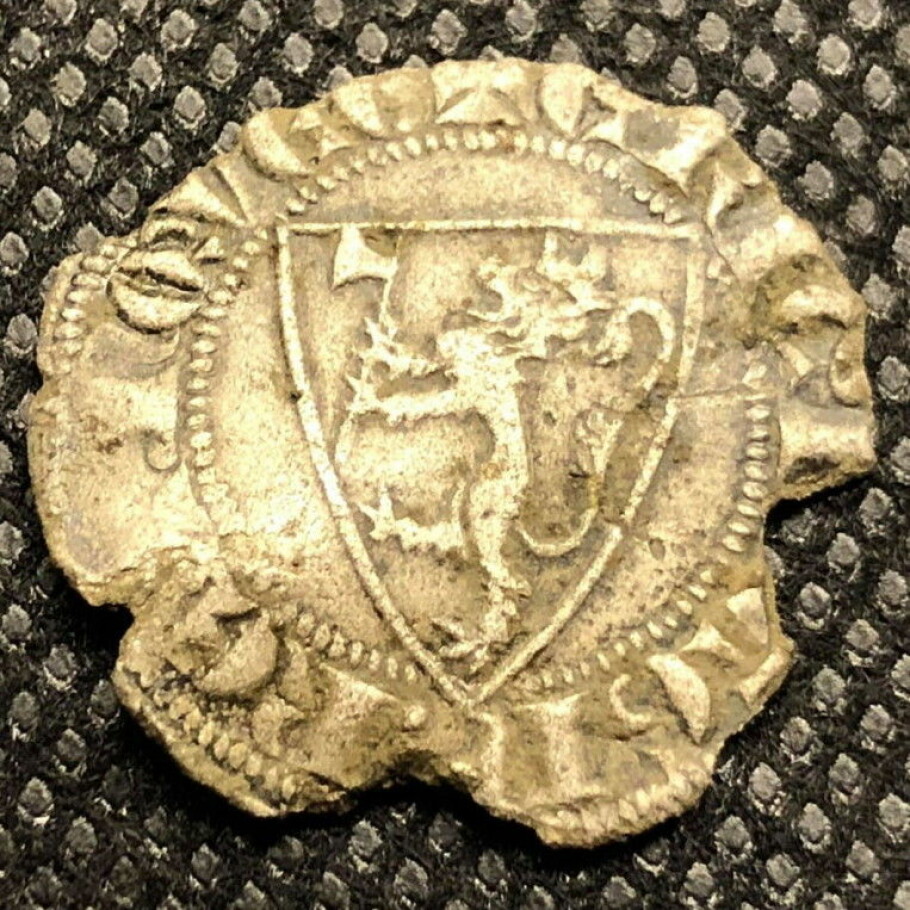
“Or we have to ask if some hobbyists simply ‘select’ their findings,” Gullbekk says.
If this is true, that makes it problematic for academics to use medieval coin discoveries by hobbyists for research purposes.
Have to ask the question
Svein Gullbekk has enjoyed a long history of working with hobbyists and the Norwegian Metal Detector Association, which is by far the largest in the country with just over 600 members. The members there have voluntarily assisted archaeologists with free work and are happy to volunteer.
“I myself have stood on the barricades for metal detector hobbyists for 20 years and I have had close collaboration and dialogue with this milieu for all these years. But now I would like to have a debate with people about what we have found out", he says.
“Of course, there are people who break the rules, we’re aware of that. This is true everywhere. But if we are going to rely on and collaborate with metal detector hobbyists, then this is something we have to deal with,” he said.
"We find very few Norwegian coins"
Erik Rønning Johansen is the chairman and spokesperson for the Norwegian Metal Detector Association. The association has eight local branches around the country.
“I myself am from Østfold and know that we find very few Norwegian medieval coins there. We have found quite a few medieval coins from England,” he says. “But I have no explanation for this.”
Johansen says that the association is characterized by a strong sense of internal justice. If someone discovers that another person is trying to be deceptive about a find that should be handed over to the authorities, then this is immediately adressed.
“The metal detector hobbyists I know are honest people who follow the law,” he says.
At the same time, Johansen admits that if someone hides a coin that, under the law should be handed in, the group can’t control this.
“There are dishonest people everywhere. I can’t guarantee that it doesn’t happen with us either. But there are a lot of us on the lookout for this kind of thing,” he says.
Kai Uno Garseg, general manager of the company Metallsøger AS, which is the largest retailer of metal detectors in Norway, confirms that sales of metal detectors have increased quite a bit in recent years. Sales took off around 2010, Garsegg says, at the same time as a popular series on metal detector searching was aired on the National Geographic channel.

Coins are very special to archaeologists
Gullbekk says that exploring with metal detectors has become increasingly important in archaeology, and especially in the search for ancient coins.
“Coins are also something very special for archaeologists,” Gullbekk says.
Indeed, coins from far back in time can give researchers precise, accurate information, based on when they were made, where they were found and how many coins were found. This is rarely possible with other finds such as jewellery and pottery.
In this way, researchers can gain a lot of systematic knowledge of Norway's past through coins, dating back to a thousand years ago.
Provided the finds are accurate.
No finder's fees since 2014
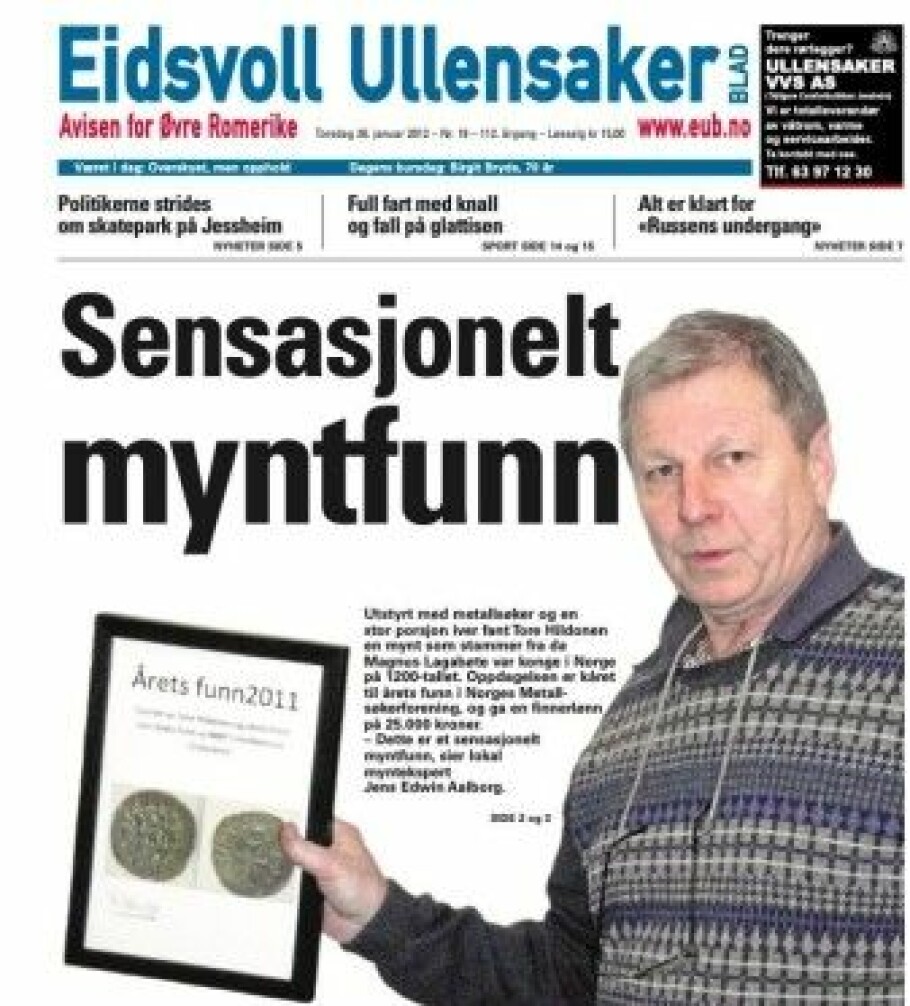
An important aspect of hobbyists’ discovery of Norwegian medieval coins is that the finder has the right to a finder’s fee. This payment is supposed to be in proportion to the current market value of the find.
This may sound like a good solution, but hobbyists who have found coins and handed them over to the local police department or county conservator in recent years have not been paid — for more than five years.
The reason for this is due to the Directorate of Cultural Heritage, which has been working on finalizing new guidelines for finder’s fees since 2014. Nothing has been paid out since work on the guidelines began.
The guidelines were finally finalized this year.
Is it about affection value?
“We have a large catalogue of finder’s fee payments that were stopped. It dates back several years. Fortunately, many people who are waiting for money from the state will soon get it,” says Gullbekk.
However, he is not convinced that this will solve the problem of coin discoveries that are not reported.
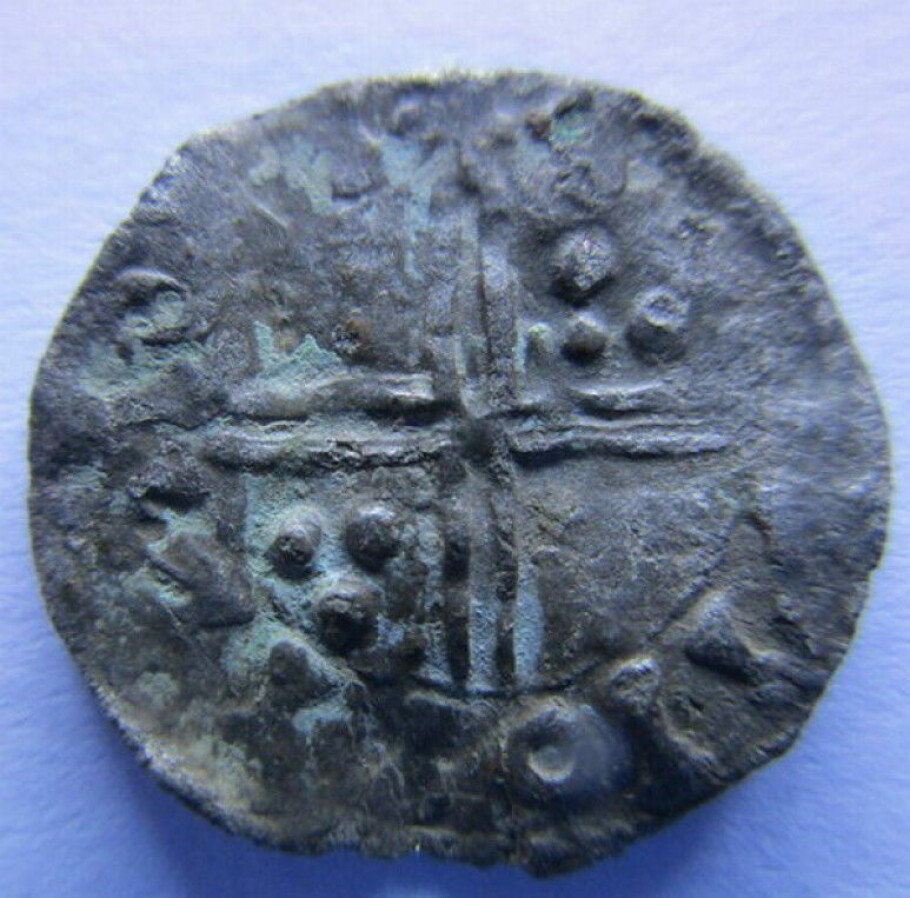
Because maybe it’s not just money that is at issue.
“Maybe it's about the value of affection,” Gullbekk suggests. “Maybe the person who finds the coin is a coin collector? Or maybe people just want to keep a coin they found?”
Or maybe people have decided not to wait for the finder's fees from the Directorate of Cultural Heritage , and instead have sold the coin privately.
Another possible explanation Gullbekk suggests is that the finder is legally obliged to share the value of a discovery 50/50 with the landowner where the discovery was made. Often this is a local farmer who gave the hobbyist permission to search on his or her land.
Alternative explanations
John Kvanli is chairman of the Rygene Detector Club in Rogaland, one of Norway's most active metal detector areas.
“It would be too easy to explain the differences in what coin researchers now find with a possible under-reporting by metal detector hobbyists,” he says.
Instead, Kvanli offers two alternative explanations.
The first is that medieval English sterling contains a lot of pure silver. Norwegian medieval coins, on the other hand, have a much higher copper content.
The sheer amount of silver content allows the English coins to emit a stronger signal that can be picked up by the detector. That means they may be easier to find than smaller coins with a much lower silver content, as is the case with many of the Norwegian medieval coins.
“Norwegian medieval coins, with their lower silver content, are more easily destroyed on land where hobbyists are mostly looking,” Kvanli says.
"These coins, with more copper in them, also wither in the soil faster than pure silver coins. On top of that are all the external influences such as intensive ploughing and harrowing of the soil. This means that coins that are initially more fragile than pure silver coins become more fragmented and degraded over time."

Time will tell
Kvanli agrees that hobbyists should be finding Norwegian and foreign medieval coins in proportions that are more similar to what archaeologists find in the ground.
"But we don't," he says, and offers one more possible explanation.
Were there simply many more English and other foreign coins in circulation in everyday Norway during the Middle Ages than researchers have been able to document to date in the discoveries they base their determinations on?
Kvanli believes we should be open to the fact that coin discoveries made in recent years and in the future can shed new light on the different types and percentages of medieval coins used in rural Norway.
The vast majority of the finds that archaeologists themselves have made, after all, come from excavations at church sites and coin hordes. The latter are called depots.
"Time will tell us which is right," says Kvanli, adding that the organized metal detector associations stand ready to bring new knowledge to numismatic research.
Kvanli says his sense of the metal detector hobbyist milieu is that even though it has grown much larger over the last ten years, the hobby has become more knowledge-based and organized than ever before.
“In our group, we hold people to a strict interpretation of the law in relation to the antiquities we find. And we want it to be that way in the future as well,” he says.
The Rygene Detector Club’s website includes many pictures of discoveries made by club members.
Reference:
S.H. Gullbekk et.al: Kildekritiske refleksjoner omkring metallsøking og myntfunn: Må mynthistorien skrives om? (Reflections on metal detecting and coin finds: How reliable are the results?). Viking, 2019. Summary.
———
Read the Norwegian version of this article at forskning.no





























